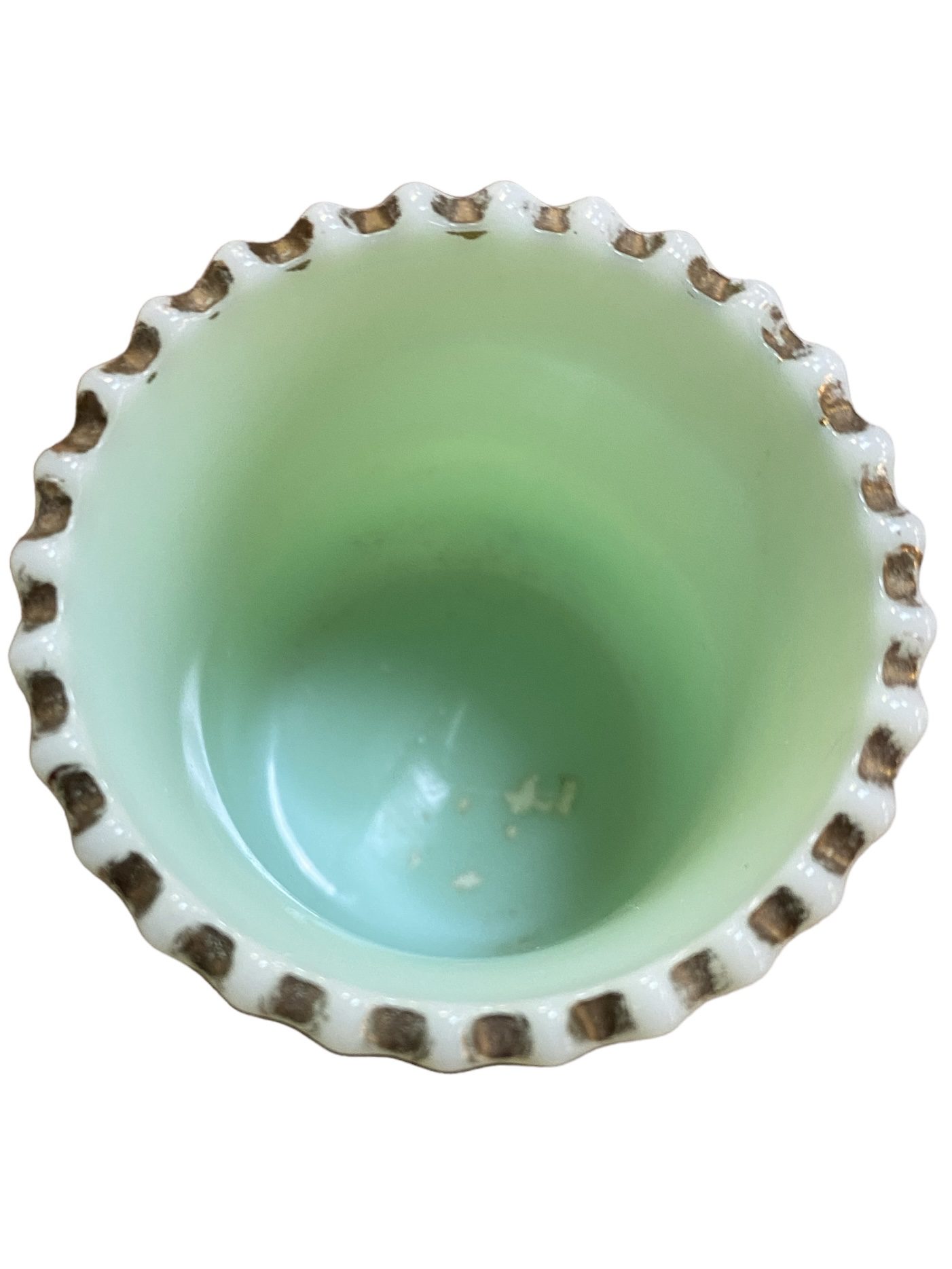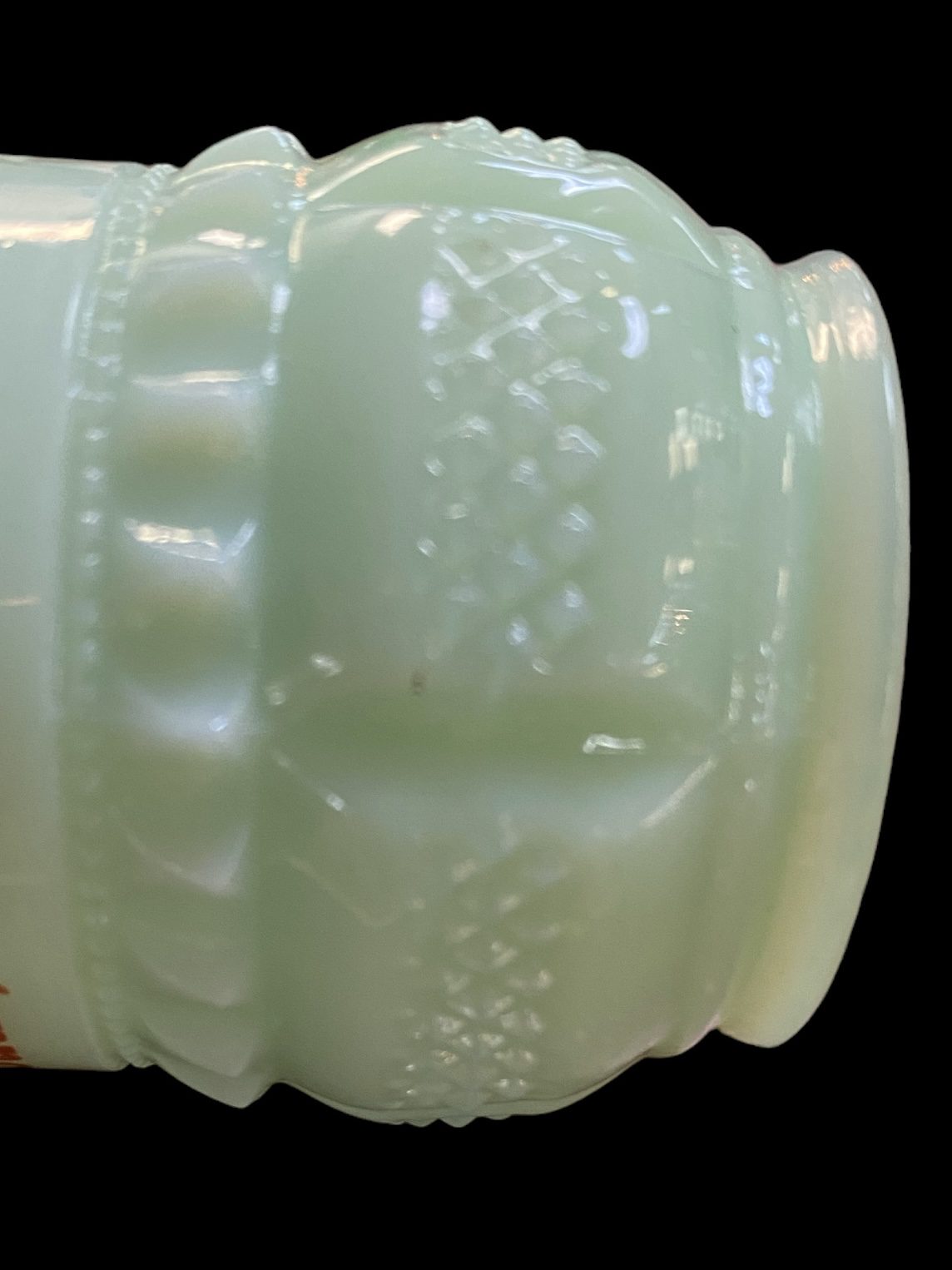EAPG Toothpick Holder: Souvenir from Plymouth Mass. Columbia or Quihote Pattern
$25.00
A typical EAPG, [Early American Pattern Glass], souvenir toothpick holder made from Ivorina Verde. Dated between 1850-1914.
This particular piece is pale green pressed custard glass. It depicts the wording ‘Souvenir of Plymouth Mass’.
It is, in our opinion, in very good condition, although we suggest that you use the pictures to confirm your opinion of the piece before purchase.
This toothpick holder has gold detailing to the top ridging. It has a fluted base and raised detailing to the mid and lower section of the pot and base.
The wording ‘Souvenir of Plymouth, Mass is hand painted on the front.
The pattern is known as ‘Quihote’ or ‘Columbia’ and the original manufacturer’s name is ‘Columbia Tar’.
Most probably from the Tarentum Glass Company.
Diameter: 2.2″
Height: 2.5″
[4044-16]
Description
The toothpick is one of the few inventions being used today that predates the arrival of modern humans. Fossil evidence of ancient skulls, for instance, suggests that early Neanderthals used tools to pick their teeth. Scientists have also found tooth indentations indicative of teeth picking in human remains among Australian Aborigines, prehistoric Native Americans, and the earliest Egyptians.
The toothpick wasn’t always quite the lowly, mass-produced and disposable piece of wood that we’ve come to know today. Queen Elizabeth once received six gold toothpicks as a gift and would often showcase them. There’s even an anonymous portrait depicting her as an old woman wearing multiple chains around her neck, from which hung a gold toothpick or a case.
Meanwhile, those who couldn’t afford such luxuries resorted to more creative ways of fashioning their own toothpicks. The Romans came up with a particularly clever method of pulling bird feathers, chopping off the quill and sharpening the tip. The technique was passed on to future generations in Europe and eventually carried over to the new world. Over in the Americas, native peoples carved toothpicks from deer bone. And just up north, Eskimos used walrus whiskers.
With the ubiquity of toothpicking tools across the world, it was only a matter of time before an industry was built around them. As small businesses specializing in toothpick manufacturing began to pop up, demand for toothpicks also grew. An American entrepreneur named Charles Forster is probably one of the most well known of toothpick manufacturers. [1826-1901].
[courtesy of
As this industry grew so did the design of toothpick holders that to this day come in many shapes and forms. They became hugely collectible in Victorian times and it was only the invention of floss that started their demise in the 1980’s.
Did you know that there is a National Toothpick Collector’s Society? The society promotes education of the history etc. of toothpicks to all of its members and non-members.








